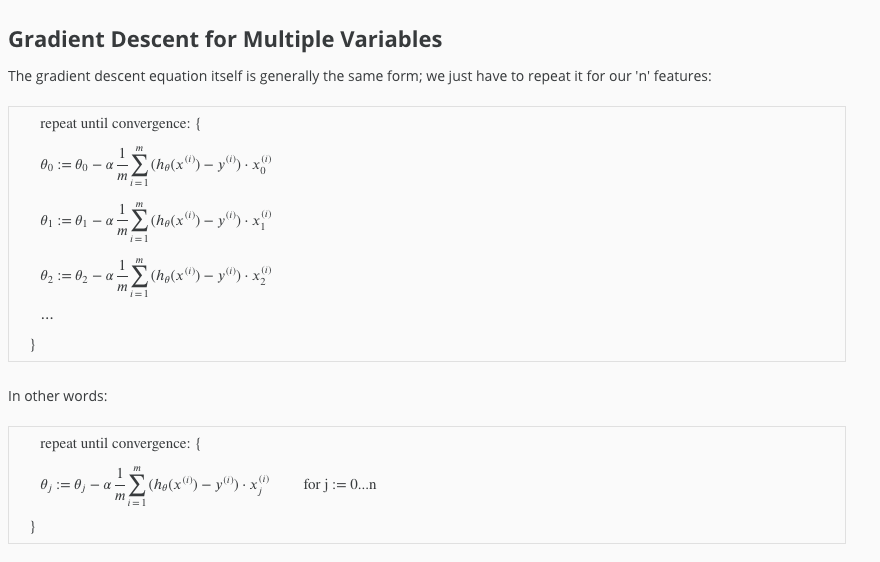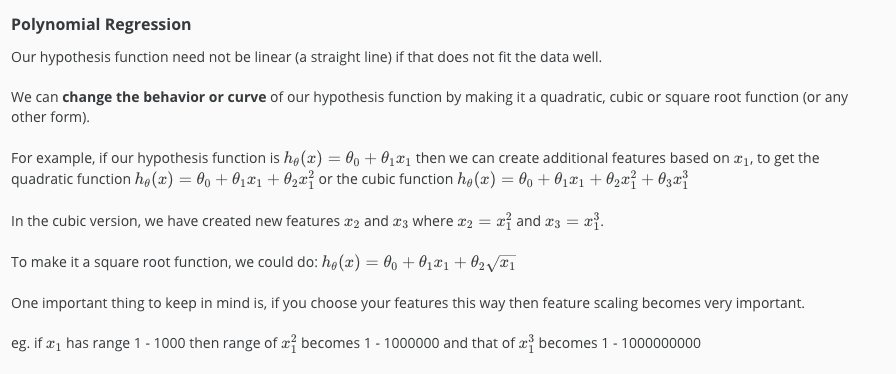Week 2 Machine Learning

Multivariate linear gradient
hypothesis function
- Multiple features, single out come variables.
- Definition of hypothesis function
- hθ(x) = θ0 + θ1x1 + θ2x2 … + θnxn
- x0 = 1
- hθ(x) = θ0x0 + θ1x1 + θ2x2 … + θnxn
- x = (N+1) vector, θ = (N+1) vetor
- hθ(x) = θTx
Multivariate linear regression

Feature scaling
- If ranges for various features vary quite a bit, leads to skewed chart, leading to slow rate of convergence.
- To speed up speed of convergence scale all features so that ranges for all are between 0 to 1.
- Example - Feature 1 = potential values 0 to 10000. ScaledFeature 1 = (Feature 1)/10000 = potential values 0 to 1.
- If features can have negative values then potential values will be -1 to 1
Mean normalization
- All features having similar mean (zero) helps with rate of convergence.
- Normalize all features so that the mean is at zero.
Formula to do feature scaling and mean normalization
xi = (xi-μi)/Si
- &mui = average value of the feature.
- Si = Max Value - Min Value for the feature
- Features a range of -0.5 to 0.5
Practical tips for gradient descent
- Best way to debug if gradient descent is working is by plotting J(θ) for number of iterations.
- Learning rate too small = slow convergence
- Learning rate too high = J(θ) may not converge.
- Try α = 0.001, 0.003, 0.01, 0.03, 0.1, 0.3, 1…
Polynomial regression

Normal Equation
θ = (XTX)-1XTy
| Gradient descent | Normal Equation |
|---|---|
| Need to choose learning rate | Dont need to choose learning rate |
| Needs many iterations | No need to iterate |
| O(kn)2 | O(n3) to calculate XTX |
| Works well even when n in large | Slow if n is very large |